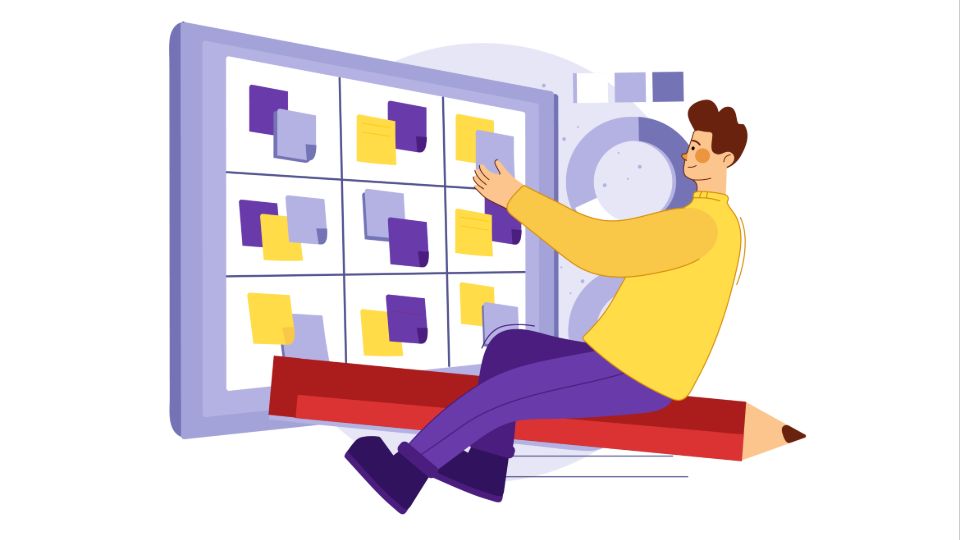How Does a Sprint Retrospective Template Help?
In Agile software development, the sprint retrospective is a crucial meeting for reflection and improvement. Sprint retrospective templates help structure these meetings, making them more effective and productive. These templates provide a framework for the team to analyze their past sprint, identify improvements, and create actionable plans for the next sprint.
What is a Sprint Retrospective?
A sprint retrospective is held at the end of each sprint and serves several purposes:
- Reflection: The team reflects on the sprint, considering what went well and what didn’t.
- Improvement: The team identifies areas that need improvement and brainstorms ways to address these issues.
- Action Plan: Concrete steps are decided to enhance processes for the upcoming sprint.
The Role of Templates in Retrospectives
Sprint retrospective templates provide a structured approach to the meeting, offering several key benefits:
- Consistency in Approach: Templates ensure that essential topics are covered in each retrospective, maintaining consistency across meetings.
- Time Efficiency: With a predefined structure, the team can focus on discussing the content rather than worrying about the format.
- Improved Participation: Templates often include prompts that encourage everyone on the team to contribute, ensuring diverse perspectives are heard.
- Better Focus: Templates help keep the discussion focused on the areas that need improvement, ensuring the team doesn’t veer off-topic.
Key Elements of Effective Templates
A good sprint retrospective template typically includes the following components:
- What Went Well: A space for listing positive aspects of the sprint.
- Challenges or Roadblocks: Areas where the team faced difficulties or bottlenecks.
- Brainstorming Improvements: A section dedicated to identifying potential improvements.
- Action Item Allocation: Assigning specific actions for team members to implement in the next sprint.
Benefits of Using Sprint Retrospective Templates
- Enhanced Structure: Templates provide a clear, organized framework for retrospectives, making them easier to conduct.
- Increased Engagement: Interactive and visual templates encourage team members to participate and share their thoughts.
- Measurable Progress: By tracking and comparing templates over time, teams can see their progress and identify recurring issues.
- Adaptability: Templates can be customized to fit specific team needs, making them versatile for different project types.
- Facilitation of Remote Work: Digital templates allow distributed teams to conduct effective retrospectives, ensuring collaboration even when working remotely.
Popular Template Formats
There are several common formats for sprint retrospective templates:
- Start, Stop, Continue: Identifying actions to start, stop, or continue doing in future sprints.
- Sailboat: Visualizing the sprint as a boat moving toward its goal, with wind (positives) and anchors (negatives) influencing its path.
- 4 Ls (Liked, Learned, Lacked, Longed For): Categorizing feedback into what was liked, learned, lacked, and longed for during the sprint.
- Mad, Sad, Glad: Collecting feedback on what made the team mad, sad, or glad during the sprint.
- Lean Coffee: A more flexible format where the team votes on the topics to discuss and prioritizes them in real time.
Implementing Templates Effectively
To maximize the value of sprint retrospective templates:
- Choose the Right Template: Select a template that aligns with your team’s culture and the goals of the retrospective.
- Rotate Templates: Keep retrospectives fresh and engaging by rotating between different templates.
- Encourage Honest Feedback: Use the template structure to foster open and honest discussion within the team.
- Follow Up: Ensure that action items from previous retrospectives are revisited and completed.
Vabro: Elevating Your Retrospective Experience
While traditional templates are valuable, Vabro enhances the sprint retrospective process with additional features that take retrospectives to the next level:
- Customizable Templates: A library of templates that can be adjusted to suit your team’s unique needs.
- Real-Time Collaboration: Seamless collaboration features for distributed teams, enabling everyone to contribute regardless of location.
- AI-Powered Insights: Vabro’s AI engine identifies trends across sprints, providing actionable insights for continuous improvement.
- Integration with Agile Tools: Vabro integrates with your existing tools, ensuring that retrospective data is connected to your broader project management system.
- Automated Tracking and Reminders: Action items from retrospectives are tracked automatically, with reminders to ensure they are completed.
Conclusion
Sprint retrospective templates provide structure, consistency, and focus, making retrospectives more efficient and valuable. By using tools like Vabro, teams can enhance their retrospectives with real-time collaboration, AI insights, and seamless integration, ensuring continuous improvement and fostering a culture of learning and growth. Vabro’s advanced features help turn retrospective data into actionable plans, allowing teams to evolve and improve their processes faster than ever.
